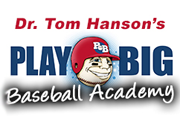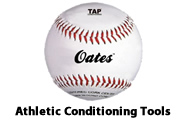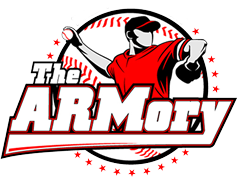
Bill Wambsganss (top left, in white) completes his unassisted triple play in Game 5 of the 1920 World Series. This marks the only time any triple play has been executed in the postseason.
In baseball, an unassisted triple play occurs when a defensive player makes all three putouts by himself in one continuous play, without his teammates making any assists. Neal Ball was the first to achieve this in Major League Baseball (MLB) under modern rules, doing so on July 19, 1909.[1] For this rare play to be possible there must be no outs in the inning and at least two runners on base. An unassisted triple play usually consists of a hard line drive hit directly at an infielder for the first out, with that same fielder then able to double off one of the base runners and tag a second for the second and third outs.[2]
In MLB, a total of fifteen players have fielded an unassisted triple play,[3] making this feat rarer than a perfect game.[4] Of these fifteen players, eight were shortstops, five were second basemen and two were first basemen. Two of these players (both active) have played for only one major league team.[5][6] The Cleveland Indians are the only franchise to have three players achieve the feat while on their roster: Ball, Bill Wambsganss and Asdrúbal Cabrera. The shortest time between two unassisted triple plays occurred in May 1927, when Johnny Neun executed the feat less than 24 hours after Jimmy Cooney.[7] Conversely, it took more than 41 seasons after Neun’s play before Ron Hansen performed the feat on July 30, 1968, marking the longest span between unassisted triple plays.[7] The last player to make an unassisted triple play is Eric Bruntlett, accomplishing the feat on August 23, 2009.[8] Only Neun and Bruntlett executed unassisted triple plays that ended the game.[3]
Contents
Background[edit]

Bill Wambsganss (far left) standing alongside the victims of his unassisted triple play (from center left to far right) – Pete Kilduff, Clarence Mitchell and Otto Miller.
Most unassisted triple plays have taken this form: an infielder catches a line drive (one out), steps on a base to double off a runner (two outs), and tags another runner on the runner’s way to the next base (three outs) (almost universally, the “next base” is the same base on which the infielder stepped to record the second out.) Less frequently, the order of the last two putouts is switched.
It is nearly impossible for an unassisted triple play to occur unless the fielder is positioned between the two runners. For this reason, most of these plays have been accomplished by middle infielders (second basemen and shortstops). Just two were completed by first basemen; in both cases, they were able to reach second base before the returning baserunner. For example, after collecting the first two outs, Tigers first baseman Johnny Neun ignored his shortstop’s shouts to throw the ball, and instead ran to second base to get the final out himself.[9] The only unassisted triple play that did not take one of these forms occurred in the 19th century, under rules that are no longer in effect. (See below.)
The unassisted triple play, the perfect game, hitting four home runs in one game and five extra-base hits in a game are thus comparable in terms of rarity, but the perfect game and the home run and extra-base hit records require an extraordinary effort along with a fair amount of luck. By contrast, the unassisted triple play is essentially always a matter of luck: a combination of the right circumstances with the relatively simple effort of catching the ball and running in the right direction with it. Troy Tulowitzki said of his feat, “It fell right in my lap,” and as WGN-TV sports anchor Dan Roan commented, “That’s the way these plays always happen.”
Players who have turned an unassisted triple play[edit]
| Player | Name of the player |
|---|---|
| Position | The player’s fielding position during the unassisted triple play |
| Date | Date of the unassisted triple play |
| Team | The player’s team at the time of the game |
| Opposing team | The team against whom the player turned the unassisted triple play |
| Inning | The inning in which the unassisted triple play occurred |
| Play | The order in which the unassisted triple play was turned |
| Player is active | |
| AL | American League |
| NL | National League |
19th century[edit]
- Paul Hines, May 8, 1878, Providence Grays (vs. Boston Red Caps) (disputed)
- With runners on second and third, center fielder Hines caught a line drive from Jack Burdock that the runners thought was uncatchable. When he caught it, both runners had already passed third (according to the Boston Globe account of the game, printed on the 9th). Hines stepped on third, which by the rules of the day meant both runners were out. To make sure, he threw the ball to Charlie Sweasy at second base. It is still debated whether this was truly an unassisted triple play. Modern rules would have required either the ball to be conveyed to second base to put out the runner who had been on that base and had not tagged up, or that runner to be tagged. According to the Society for American Baseball Research, the runner coming from second, Ezra Sutton, had not yet touched third base, which would mean that even by 19th-century rules the play was not complete until Hines threw to second, and thus the play was not unassisted.[10] Ernest J. Lanigan‘s Baseball Cyclopedia, 1922, which covers professional baseball back to 1876, states on p. 157 that Neal Ball in 1909 was “the first major leaguer to make an unassisted triple play.” The Sporting News Baseball Record Book, which covers records back to 1876, likewise does not list Hines’ play in the section on unassisted triple plays.
Modern era[edit]
| Player | Position | Date | Team | Opposing team | League | Inning | Play | Ref |
|---|---|---|---|---|---|---|---|---|
| Ball, NealNeal Ball | Shortstop | July 19, 1909 | Cleveland Naps | Boston Red Sox | AL | 2nd | Caught line drive, touched 2nd, tagged runner. | [11] |
| Wambsganss, BillBill Wambsganss | Second baseman | October 10, 1920 | Cleveland Indians | Brooklyn Robins | WS[a] | 5th | Caught line drive, touched 2nd, tagged runner. | [12] |
| Burns, GeorgeGeorge Burns | First baseman | September 14, 1923 | Boston Red Sox | Cleveland Indians | AL | 2nd | Caught line drive, tagged runner, touched 2nd. | [13] |
| Padgett, ErnieErnie Padgett | Shortstop | October 6, 1923 | Boston Braves | Philadelphia Phillies | NL | 4th | Caught line drive, touched 2nd, tagged runner. | [14] |
| Wright, GlennGlenn Wright | Shortstop | May 7, 1925 | Pittsburgh Pirates | St. Louis Cardinals | NL | 9th | Caught line drive, touched 2nd, tagged runner. | [15][16] |
| Cooney, JimmyJimmy Cooney | Shortstop | May 30, 1927 | Chicago Cubs | Pittsburgh Pirates | NL | 4th | Caught line drive, touched 2nd, tagged runner. | [17] |
| Neun, JohnnyJohnny Neun | First baseman | May 31, 1927 | Detroit Tigers | Cleveland Indians | AL | 9th | Caught line drive, tagged runner, beat returning runner to 2nd.[b] | [18][19] |
| Hansen, RonRon Hansen | Shortstop | July 30, 1968 | Washington Senators | Cleveland Indians | AL | 1st | Caught line drive, touched 2nd, tagged runner. | [20] |
| Morandini, MickeyMickey Morandini | Second baseman | September 20, 1992 | Philadelphia Phillies | Pittsburgh Pirates | NL | 6th | Jumped to catch line drive, landed on 2nd, tagged runner. | [21] |
| Valentin, JohnJohn Valentin | Shortstop | July 8, 1994 | Boston Red Sox | Seattle Mariners | AL | 6th | Caught line drive, touched 2nd, tagged runner. | [22] |
| Velarde, RandyRandy Velarde | Second baseman | May 29, 2000 | Oakland Athletics | New York Yankees | AL | 6th | Caught line drive, tagged runner, touched 2nd. | [23] |
| Furcal, RafaelRafael Furcal |
Shortstop | August 10, 2003 | Atlanta Braves | St. Louis Cardinals | NL | 5th | Caught line drive, touched 2nd, tagged runner. | [24][25] |
| Tulowitzki, TroyTroy Tulowitzki |
Shortstop | April 29, 2007 | Colorado Rockies | Atlanta Braves | NL | 7th | Caught line drive, touched 2nd, tagged runner. | [26][27] |
| Cabrera, AsdrúbalAsdrúbal Cabrera |
Second baseman | May 12, 2008 | Cleveland Indians | Toronto Blue Jays | AL | 5th | Caught line drive, touched 2nd, tagged runner. | [28][29] |
| Bruntlett, EricEric Bruntlett | Second baseman | August 23, 2009 | Philadelphia Phillies | New York Mets | NL | 9th | Caught line drive, touched 2nd, tagged runner.[b] | [8][30] |
Notes[edit]
- ^ Occurred in Game 5 of the 1920 World Series.
- ^ a b This unassisted triple play ended the game.
References[edit]
- General
- “Unassisted Triple Plays”. Baseball-Almanac.com. Baseball Almanac. Retrieved July 10, 2012.
- “Unassisted Triple Plays”. MLB.com. Major League Baseball. Retrieved July 10, 2012.
- Specific
- ^ “Sports Trivia 07–19”. The Dearborn County Register. July 18, 2009. Retrieved July 24, 2012.
- ^ Adams, Cecil (September 21, 1984). “How is an unassisted triple play accomplished in baseball?”. The Straight Dope. Chicago Reader. Retrieved July 24, 2012.
- ^ a b Ginsburg, Steve (August 23, 2009). “Bruntlett turns game-ending unassisted triple play”. Reuters. Retrieved August 16, 2012.
- ^ DiComo, Anthony (December 30, 2009). “Mets bear the Brunt of unassisted triple play”. MLB.com (MLB Advanced Media). Retrieved August 16, 2012.
- ^ “Troy Tulowitzki Statistics and History”. Baseball-Reference.com. Sports Reference LLC. Retrieved August 16, 2012.
- ^ “Asdrubal Cabrera Statistics and History”. Baseball-Reference.com. Sports Reference LLC. Retrieved August 16, 2012.
- ^ a b “Hansen 8th In Unassisted Triple Plays”. The Pittsburgh Press. United Press International. July 29, 1968. p. 60. Retrieved July 24, 2012. “Ron Hansen looked surprise when informed it had been 41 years…since an unassisted triple play had been made in the majors.”
- ^ a b Zolecki, Todd (August 23, 2009). “Bruntlett joins rare company”. MLB.com (MLB Advanced Media). Retrieved July 10, 2012.
- ^ “The Ballplayers – Johnny Neun”. BaseballLibrary.com. The Idea Logical Company, Inc. Retrieved July 24, 2012.
- ^ “Play-By-Play Descriptions of Baseball’s Triple Plays (1876–1879)”. Society for American Baseball Research. April 6, 2011. Retrieved July 24, 2012.
- ^ Holway, John B. (February 1993). “First and Only World Series Triple Play Recalled”. Baseball Digest (Evanston, IL, USA: Century Publishing) 52 (2): 76. ISSN 0005-609X. Retrieved July 18, 2012.
- ^ “October 10, 1920 World Series Game 5, Brooklyn Robins at Cleveland Indians Play by Play and Box Score”. Baseball-Reference.com. Sports Reference. October 10, 1920. Retrieved July 10, 2012.
- ^ “September 14, 1923 Cleveland Indians at Boston Red Sox Play by Play and Box Score”. Baseball-Reference.com. Sports Reference. September 14, 1923. Retrieved July 10, 2012.
- ^ “October 6, 1923 Philadelphia Phillies at Boston Braves Play by Play and Box Score”. Baseball-Reference.com. Sports Reference. October 6, 1923. Retrieved July 10, 2012.
- ^ “May 7, 1925 St. Louis Cardinals at Pittsburgh Pirates Play by Play and Box Score”. Baseball-Reference.com. Sports Reference. May 7, 1925. Retrieved July 10, 2012.
- ^ Boxscore, retrosheet.org.
- ^ “May 30, 1927 Chicago Cubs at Pittsburgh Pirates (First Game) Play by Play and Box Score”. Baseball-Reference.com. Sports Reference. May 30, 1927. Retrieved July 10, 2012.
- ^ “May 31, 1927 Cleveland Indians at Detroit Tigers Play by Play and Box Score”. Baseball-Reference.com. Sports Reference. May 31, 1927. Retrieved July 10, 2012.
- ^ Idea Logical Company, Inc., baseballlibrary.com.
- ^ “July 30, 1968 Washington Senators at Cleveland Indians Play by Play and Box Score”. Baseball-Reference.com. Sports Reference. July 30, 1968. Retrieved July 10, 2012.
- ^ “September 20, 1992 Philadelphia Phillies at Pittsburgh Pirates Play by Play and Box Score”. Baseball-Reference.com. Sports Reference. September 20, 1992. Retrieved July 10, 2012.
- ^ “July 8, 1994 Seattle Mariners at Boston Red Sox Play by Play and Box Score”. Baseball-Reference.com. Sports Reference. July 8, 1994. Retrieved July 10, 2012.
- ^ “May 29, 2000 Oakland Athletics at New York Yankees Play by Play and Box Score”. Baseball-Reference.com. Sports Reference. May 29, 2000. Retrieved July 10, 2012.
- ^ “August 10, 2003 Atlanta Braves at St. Louis Cardinals Play by Play and Box Score”. Baseball-Reference.com. Sports Reference. August 10, 2003. Retrieved July 10, 2012.
- ^ Bowman, Mark (August 10, 2003). “Furcal turns unassisted triple play”. MLB.com (MLB Advanced Media). Retrieved July 24, 2012.
- ^ “April 29, 2007 Atlanta Braves at Colorado Rockies Play by Play and Box Score”. Baseball-Reference.com. Sports Reference. April 29, 2007. Retrieved July 10, 2012.
- ^ Perkins, Owen (April 29, 2007). “Tulowitzki turns unassisted triple play”. MLB.com (MLB Advanced Media). Retrieved July 10, 2012.
- ^ “May 12, 2008 Toronto Blue Jays at Cleveland Indians Play by Play and Box Score”. Baseball-Reference.com. Sports Reference. May 12, 2008. Retrieved July 9, 2012.
- ^ Castrovince, Anthony (May 12, 2008). “Cabrera turns unassisted triple play”. MLB.com (MLB Advanced Media). Retrieved July 18, 2012.
- ^ “August 23, 2009 Philadelphia Phillies at New York Mets Play by Play and Box Score”. Baseball-Reference.com. Sports Reference. August 23, 2009. Retrieved July 9, 2012.
External links[edit]
- SABR list of unassisted triple plays
- Sports Illustrated: Rarest of feats
- MLB.com: Atlanta Braves history, with video of Furcal’s unassisted triple play
- The Seth Swirsky collection has the glove used by Jimmy Cooney when he pulled off his unassisted triple play as well as a ball signed by 14 of the 15 players who have made the unassisted triple play
|
||||||||||||||||||||||||||||||||||||
This article uses material from the Wikipedia article Unassisted Triple Play, which is released under the Creative Commons Attribution-Share-Alike License 3.0.








